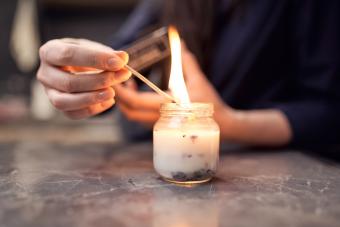
Learn the key differences between mold and mildew. Find out the different types of mold and mildew along with the dangers they can pose in your home. Get an easy to follow guide to knowing whether mold or mildew is infesting your home.
Key Differences Between Mold and Mildew
Mold and mildew are a type of fungus. Therefore, telling the difference between mold and mildew can be hard. However, mold and mildew do have a few distinctions. Before looking at these two type of fungus in depth, check out a quick chart of their key differences.
|
Mold |
Mildew |
|
|
Definition |
fungi that thrive on organic matter in warm and wet conditions |
a specific type of mold |
|
Growth |
penetrates the surface of materials |
grows on the surface of materials |
|
Where It Grows |
foods, inside structures, basements, inside walls, bathroom ceilings |
clothing, fabrics, walls, shower, paper |
|
Texture |
fuzzy or slimy |
powdery |
|
Color |
green, black, orange, brown, gray, white, blue, purple |
white, gray, yellow |
|
Types |
Aspergillus, Cladosporium, Penicillium, Stachybotrys chartarum (black mold), etc. |
powdery, downy |
What Is Mold?
Since molds like to grow in warm moist areas, they can wreak havoc on your bathroom, basement, or even windowsills. But what are molds? Molds are a specific type of fungus that form multicellular filaments and can grow on any type of organic matter. This means your clothing, leather, tiles, ceilings, and walls can all fall victim to the notorious mold. Like most fungus, molds spread via spores so once you get it in one area, it can easily spread to another area.

Types of Mold
When it comes to types of mold, there isn't a lack of them. Actually, thousands of different types of mold have been classified by scientists. Thankfully, in your home, you'll only find a few different types. According to the CDC, the common types of mold in buildings are Cladosporium, Penicillium, and Aspergillus.
-
Cladosporium: black or olive mold that appears on fabrics and floorboards
-
Aspergillus - white, black, gray, brown mold on insulation, paper, walls, and clothing
-
Penicillium - green or blue in colored mold found in carpeting, mattresses, and insulation
Dangerous Molds for Humans
While all molds can be a health risk to those with allergies or cause allergic reactions, one mold stands out above the rest for its toxicity. Stachybotrys chartarum, or black mold, is a toxic mold that grows in continuously damp areas, leading to a range of allergies, breathing problems, and sinus infections in humans.
What Is Mildew?
When it comes to mildew, you can think of it as mold's little brother. Why? Because mildew is a specific type of mold that typically grows in a smaller area and it's less invasive than mold. The Federal Emergency Management Agency refers to mildew as pre-mold or early-stage mold. Meaning if you catch it early, it's going to cause less damage.

Types of Mildew
Since mildew is a type of mold, it makes sense that it comes in different types. But unlike mold with its expansive list, mildew only has two general types. But both types of mildew give off a noticeable musty smell.
-
Powdery mildew - patchy splotches of white on surface
-
Downy mildew - yellow spots on surface
Is Mildew Harmful to Your Health?
Mildew typically has the same potential dangers as mold because it is a form of mold. Therefore, it might lead to allergic reactions and respiratory issues. However, mildew is less dangerous than some types of mold.
Which Is Worse Mold or Mildew?
Both mold and mildew are fungi, so it's important to nip them both in the bud very quickly. However, since mildew is the pre-game to an all-out mold infestation, it's thought to be the lesser of the two evils.
How to Clean Mold and Mildew
When it comes to cleaning mold and mildew, you can follow the same cleaning regimen to get rid of them. While commercial cleaners are available, you can use homemade mold and mildew cleaners to remove the mold from your home. Just make sure to follow all the safety precautions for getting your mold or mildew problem under control.
Mold vs. Mildew
The difference between mold and mildew can be hard to tell. This is because mold and mildew are both fungi. Therefore, they can look similar. However, mildew is the milder of the two types of infestation. So if you start to see a little bit of growth in your bathroom or kitchen, you want to eradicate it fast.







